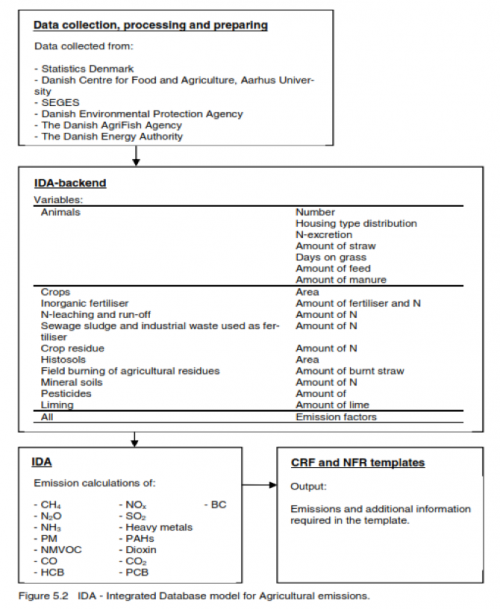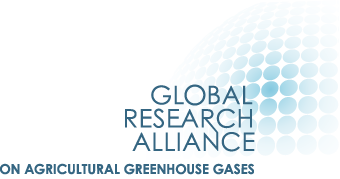Keywords: inventory database
What data needs were addressed? Structured data management for accurate and consistent estimates of emissions.
Why was the data needed? To determine GHG emissions from enteric fermentation and manure management and ensure that data is managed for consistency, completeness and timely submission of the inventory.
Methods used: Design of an integrated relational database system.
How was the data need addressed? To enable structured input data management as well as establish linkages between some of the input data collected, the ‘Integrated Database model for Agricultural Emissions’ was developed by the Department of Environmental Science of Aarhus University. In one database, ‘IDA-backend’, input data is stored and updated annually. The database is linked to a number of equations in the actual IDA database, where the calculations of emissions are implemented. Only the input data is updated annually, the equations and calculations are then automatically updated in the system.
Differentiated according to livestock type, weight class and age, 39 different livestock categories are represented within IDA. Using housing and manure types, these categories are further subdivided, resulting in 269 different combinations of livestock sub-categories and housing types. For each of these combinations, information on feed intake, digestibility, excretion and grazing days is included, and emissions are calculated.
The system enables the consistent estimate of GHG emissions from livestock. It is used to cover emissions of air pollutants and greenhouse gases. A direct link between input data is used to estimate methane emissions from enteric fermentation and manure management. Furthermore, a direct coherence exists between input data used to estimate methane, ammonia (NH3) and N2O emissions.

Further Resources
Danish emission inventories for agriculture: inventories 1985-2015.
Author: Andreas Wilkes, Values for development Ltd (2019)

